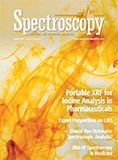Market Profile: Laser-Induced Breakdown Spectroscopy
Industrial mass spectrometers are grouped into three product categories: leak detectors, residual gas analyzers (RGAs), and process mass spectrometers.
Because of the manner in which samples are analyzed in laser-induced breakdown spectroscopy (LIBS), the applications for this technique seem endless. For the life sciences, some applications include noninvasive analysis of human hair and teeth, cancer tissue diagnosis, bacterial or viral identification, and detection of bioaerosols and biohazards. For environmental purposes, LIBS can be used to analyze soils and minerals in geology, mining and construction, and air and water quality. Additionally, it can be used to control industrial sewage and exhaust gas emissions. LIBS can also be used in industry for in situ metal melting control, control ofsteel quality, and 2D mapping of metal alloys.
Much development has occurred during the past decade to take LIBS technology to new heights, if not the next level. In 2012, applications for aerospace became successful when the Mars Science Laboratory mission bought ChemCam, a LIBS instrument with contributions from JPL and Ocean Optics, to the surface of Mars. In a recent development, LIBS has seen the introduction of double-pulsed laser systems to distinguish between orthogonal and perpendicular configurations. This advancement is useful in conducting analysis in liquids, as the initial laser pulse forms a cavity bubble in which the second pulse acts on the evaporated material.
The total market for LIBS spectrometers was measured at about $40 million in 2018. In the past few years, the market has shifted to handheld devices for metal and environmental analysis requirements, with contenders such as B&W Tek, Bruker, Hitachi, Rigaku, SciAps, and StellarNet producing only handheld analyzers. Meanwhile, seasoned LIBS companies such as TSI and Applied Spectra exclusively offer their desktop LIBS spectrometers. Overall, demand for LIBS for metal applications accounted for over a quarter of the market share in 2018 and is expected continue being a major application for metal analysis for years to come.
LIBS demand by end-market for 2018.

Market size and growth estimates were adopted from TDA’s Industry Data, a database of technology market profiles and benchmarks covering laboratory and process analytical instrumentation that are updated quarterly. It also includes data from the 2019 Instrument Industry Outlook report from independent market research firm Top-Down Analytics (TDA). For more information, contact Glenn Cudiamat, general manager, at (310) 871-3768 or glenn.cudiamat@tdaresearch.com. Glenn is a market research expert who has been covering the analytical instrumentation industry for more than two decades.

Market Profile: Mass, Molecular, and Atomic Spectroscopy
December 1st 2018Mass spectrometry, molecular and atomic spectroscopy technologies combine to represent more than a fifth of the overall market for laboratory analytical instrumentation. These techniques are perhaps the most broadly used instruments, with utility in pharmaceuticals and other life sciences, chemicals, environmental, food, clinical/Dx and other applications.